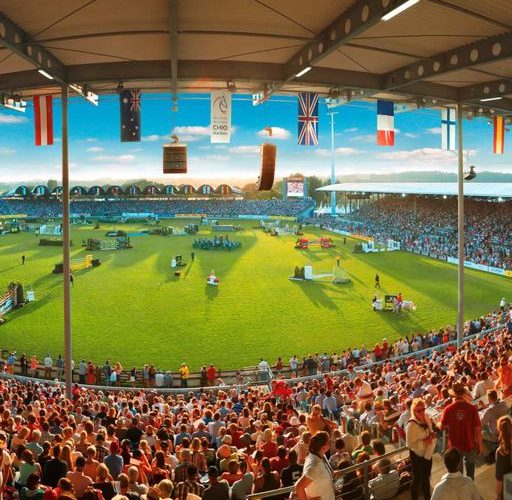As Clementine Goutal was finishing her MBA at Columbia Business School, she received a tantalizing phone call from Olympic show-jumper Lucy Davis. “She called to tell me that she was starting Prixview with Rob Gierkink.
The founder and chairman of Datalogix, Rob has a long career in data analytics. In addition, he grew up with horses, sits on the board of several shows, and has two daughters that have competed. “They were on a mission to bring sophisticated data into show jumping in order to grow the audience and create lucrative opportunities for everyone in the industry,” Goutal explained in an interview with Kaval. With the overwhelming success of fantasy football and other fantasy sports, the team hopes to employ a similar tactic to draw viewers.
“The gaming and legal sports betting landscape has significantly increased the tune-in, sponsorship, and reach for several other emerging sports over the last few years, and I felt that equestrian should not be left out of this global trend,” said Davis. “That said, before we could even start introducing any games—let alone legal sports betting—I realized that the live data infrastructure for our sport was seriously behind others. ‘Four faults and 60 seconds’ doesn’t really mean much to the casual viewer. Broadcasters, media outlets, and gaming brands rely on highly accurate and robust live data to educate viewers on what is happening and build betting frameworks around it.”
“We spoke a few times about their mission, the challenges, and opportunities, and I was really impressed by Prixview,” said Goutal. “When she asked me to join and head strategy and partnerships, it was a no-brainer.”
Prixview’s primary function is to gather data on the world of show jumping. Data journalists log which jump a horse-and-rider combination has a fault on, what jump type it is, off which lead, with the front or hind legs, on which surface, what arena size, from which starting position in the order of go, and so on. They then process these into split-second analytics to serve their users, broadcasting partners, and fantasy games.
“Over 80 percent of bets now in modern markets are made during the game, which means that people are watching and following more,” continued Davis. “I felt that this was the best route to get our sport in front of more eyeballs, starting with the many existing riders that would like to get to know the sport’s technicality better.”
Essentially, Prixview takes horse-and-rider combinations and runs predictions on the outcome of their performance based on the circumstances of any given class. For example, “What is the probability that McLain Ward and Contagious will go clear in this speed class, with jumps set at 1.55m, on a big grass field, in the afternoon, starting late in the order, with this course designer, and then run the outcome. It compares this probability to other horse-and-rider combos to create head-to-head match-ups. As with other sports like basketball and football, it sets a point spread, which means that the pair that is less likely to win can earn you more points if you bet on them. The total points a user earns from each of the 10 to 15 match-ups in a game are added up. You can win real cash prizes, depending on where you place among the community.
“If it sounds complicated, don’t worry, it’s not!” said Davis. “Our games are also free to play, so it’s a low-risk way to get into the action and share with your friends. We’ve already found that riders, from beginner to professional, are tuning in to watch more classes than before to follow their picks in real time. We look forward to using our data and games to bridge the gap between the many people who already ride and even more who just like horses but don’t know as much as they’d like about our top sport competition.”

